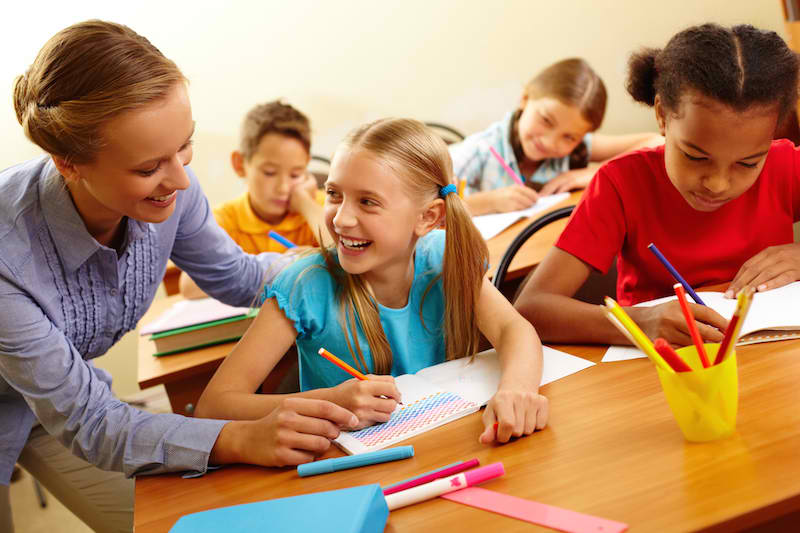Positive, productive learning environment is a key to students’ academic, emotional and social success in school.
Unfortunately, positive learning environment don’t just happen on their own–they must be created.
1. Make learning relevant
The more relevant a topic or subject is to students’ own success and happiness, the more engaged they’ll become in the learning process. On a whole, when teaching math, science, social studies, even history, look for ways to adapt the lesson or lecture to the interests of students. It’s also helpful to discover the interests, talents, and learning styles of each student if possible. As resources permit, adjust teaching methods and strategies to meet the needs of students on an individual basis and you’ll see students become more attentive and engaged.
2. Develop a Code of Conduct
There should be a clear and agreed upon understanding of positive and negative behaviors so that it will be easy to create a positive learning environment in the classroom and at school. The first step to establishing a code of conduct is to ask students how they like being treated. From this question students should be able to brainstorm a list of behaviors they believe are respectful, kind, fair, and appropriate. At this point, together students and teacher should be able to agree that treating others the way we each want to be treated is the best code of conduct, and should set the stage for appropriate classroom behaviors.
3. Employ a Positive Actions Curriculum
Students do not have the same understanding of a positive environment. Children come from diverse family, cultural and socioeconomic backgrounds. All these influences, and others, shape students’ perspective of what’s appropriate, and what is not. It’s important that students are taught positive behaviors in a consistent and systematic way at school and in the classroom. Developing a Positive Action curriculum is one of the most effective ways to teach and instill in students positive behaviors. Positive action curriculum should teach students:
That positive actions lead to a good feeling and positive self image.
- Positive actions such as nutrition, property exercise, and sleep that lead to a healthy body.
- Positive actions such as problem-solving, decision-making and thinking skills develop the brain and make us smarter.
- Positive actions such as kindness, living the Golden Rule, and being respectful allow us get along with others.
- Positive actions such as time management and managing our emotions help us better manage our own affairs.
- Positive actions such as admitting mistakes and taking responsible for our actions allow us to be honest with others and ourselves.
- Positive actions such as goal setting lead to personal growth and improvement.
Positive actions lead to positive behaviors, which help children feel good about themselves and others.
4. Help Students Develop Intrinsic Motivation
Feeling good about themselves is an intrinsic motivator to students–especially elementary age students–and positive actions help children feel good about themselves. So, how do you help students consistently engage in positive actions? First, actions are always preceded by thoughts. Second, actions and behaviors are typically consistent with thoughts. Third, feelings, children experience about themselves, are based in large part by their actions. Helping students learn that by changing a negative thought to a positive they can produce positive actions, and that positive actions will help them feel good about themselves is a powerful intrinsic motivator.
5. Reinforce Positive Behaviors
Recognizing and reinforcing positive behaviors is one of the most effective ways to produce positive actions in students, strengthen intrinsic motivation, and create a productive and positive learning environment. Certificates, stickers, toy prizes, tickets, tokens and other reward systems are great ways to recognize students and reinforce positive behavior and achievement in the classroom. However, it’s also important to help student make the connection between positive behavior and the good feeling it produces (not just the physical award). As students make that connection between positive behavior and good feelings, and continue producing positive actions, they’ll feel good about themselves, the intrinsic motivation is strengthened, and students will continue producing more positive actions and exhibiting positive behaviors.
6. Always Respond With Positivity
Positivity is a key component a positive learning environment. Interacting with students in a positive manner, exhibiting positive behaviors, and maintaining a positive attitude is one of the most important steps for creating a positive learning environment and producing successful students. Regardless of the situation or circumstance, there is always a way to respond to and interact with students in a positive way. Teaching students how to communicate and interact with each other in a positive manner is also a key to fostering a positive learning environment in the classroom. Positivity is one of the most powerful agents of change for establishing and maintaining a positive learning environment at school and in the classroom.
